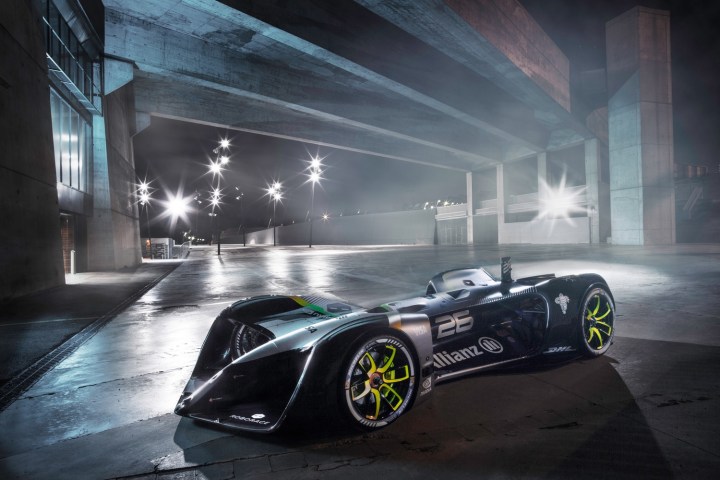
The race cars — dubbed “Robocars” by series organizers — will now use Nvidia’s Pegasus AI autonomous-driving computing platform. It replaces the Nvidia Drive PX 2 platform previously used in the Robocars. Nvidia has been an important technical partner of Roborace from the start, supplying all of the computing hardware used in both the Robocars and previous “DevBot” prototypes.
Launched in October 2017, the Pegasus AI platform can perform 320 trillion operations per second, Roborace said, or about 10 times what its predecessor could handle. The Pegasus AI unit is about the size of a license plate, but has the computational power of a 100-server data center, according to Roborace. The upgraded race car will be on display at CES 2018.
The Pegasus AI unit will run Roborace-developed software, which will control the car and interpret data from 18 onboard ultrasonic sensors, two optical speed sensors, six cameras, and a GPS unit. The Robocar is propelled by four electric motors generating a combined 402 horsepower, which can get it up to a top speed of 198 mph, according to Roborace.
So far, though, the car’s only outings have been low-intensity demonstration runs. Roborace has also demonstrated its DevBot prototypes in situations approaching actual races, including a demo in Buenos Aires early last year where two cars shared the track for the first time (one of them crashed), and last month in Hong Kong, where cars were controlled by a human driver and AI competed to set the fastest lap of the Formula E circuit there.
Roborace plans to run as a support series for Formula E, which features human-driven electric cars. The self-driving cars will essentially serve as an opening act for Formula E. But it’s still unclear when that first fully autonomous race will take place. Going from demonstration runs to a full grid of autonomous cars driving themselves in anger is a big leap. Even if Roborace can make that happen, it will have to convince the public that racing can still be exciting without human drivers.
Editors' Recommendations
- Cruise autonomous vehicle drives over woman just after she was hit by another car
- Officers confused as they pull over an empty self-driving car
- We now know what the self-driving Apple Car might look like
- Waymo’s self-driving cars can’t get enough of one dead-end street
- Watch San Franciscans take a ride in Waymo’s self-driving car



